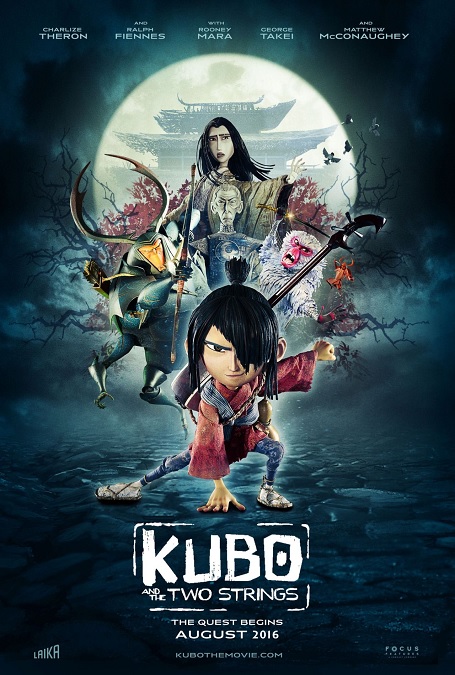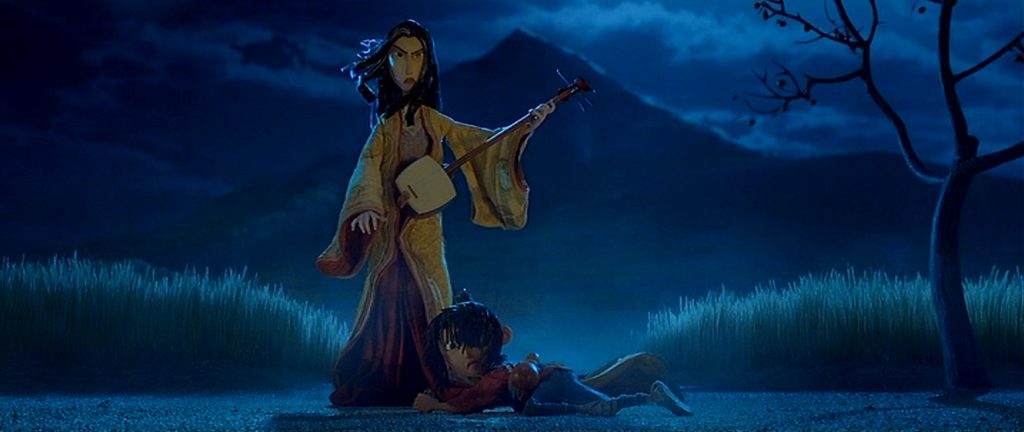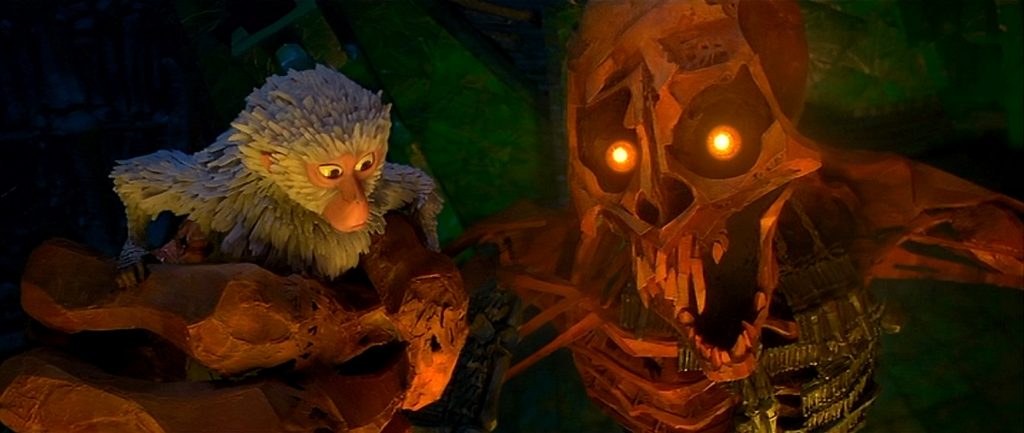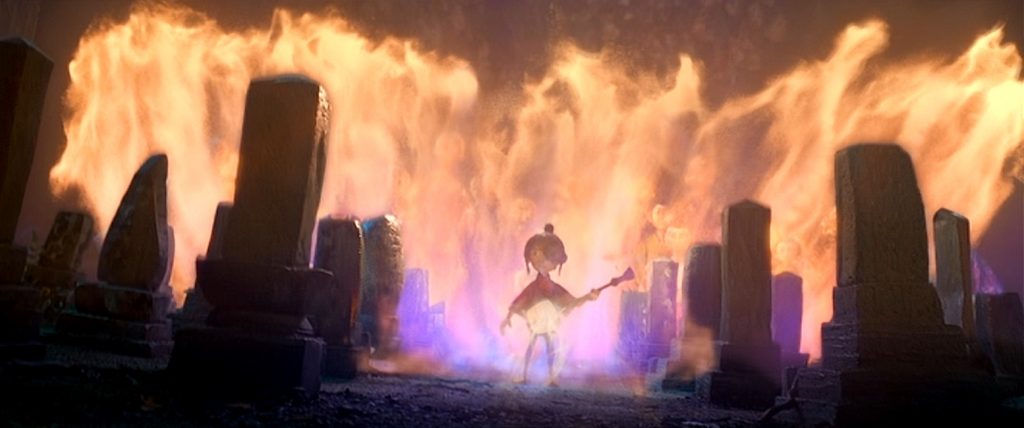



Kubo and the Two Strings – 2016

I almost gave this movie only four stars, but it was just such a good movie, I had to give it its due credit. Why would I have given it a lower score? Well, it was, after all, just a stop-motion animation film. It’s not like we haven’t see this kind of animation before. Was it done well? Of course it was, and I can see where it was phenomenally better than, say, The Nightmare Before Christmas or Coraline.
To be sure, the animation was incredible. However, as with all stop-motion animation, it has it a few issues, which are inherent in the art form. For example, when characters are speaking, try not to look too closely at their mouths. Every once in a while, the smoothness of the motion falters, and you can see a certain amount of jerkiness. Also, in order for the small puppets to be as expressive as they needed to be their eyes were vastly over-sized. There were times when Kubo’s eyes seemed to cover nearly a third of his entire head. The same can be said about his hands and his feet – too big. But I wouldn’t even call those small attributes flaws. They are just normal conditions of the art form.
The but the high quality of the film’s effects far outweighed these minor issues. The design of the digital environments was stunning. We were taken from a frozen blizzard to a desert wasteland, from a raging sea to a dark and forbidding cave, from Kubo’s lonely mountain home, to the ruined home of his dead father. As always, lighting was key in blending the CGI backgrounds to the live environments of the puppets. There was even a great sequence that took place underwater in a garden of giant glowing eyeballs, and everything blended seamlessly.
There was a sequence in the film in which the heroes battled a giant skeleton with glowing red eyes. At first, this scene didn’t impress me, but then I did a little reading about the making of the film. Apparently, the skeleton was the largest puppet ever used in a stop-motion animated feature. It was eighteen feet tall, and I’d say that, in itself, was pretty impressive if you consider the medium of stop-motion. Making something that large move the miniscule amounts necessary to achieve the same smooth motion as the rest of the movie was pretty amazing.
So when it comes down to it, I can see why the film was nominated for Best Visual Effects, but I can also understand why it didn’t win. While the execution of the stop-motion was far superior to any other stop-motion I have ever seen before, stop-motion, itself, is not as technically impressive to me as the movies it was up against. Sure, there is a certain amount of realism, of tangibility, to the images on the screen, because real puppets were filmed, one frame at a time. And my research revealed that the film contains at least 145,000 separate still images strung together, which must have constituted an unimaginable amount of work to put the film together. But the Best Visual Effects category is about more than the patience and ridiculously hard work of the filmmakers. Stop motion animation is like a one-trick pony, even if the trick is amazingly executed.